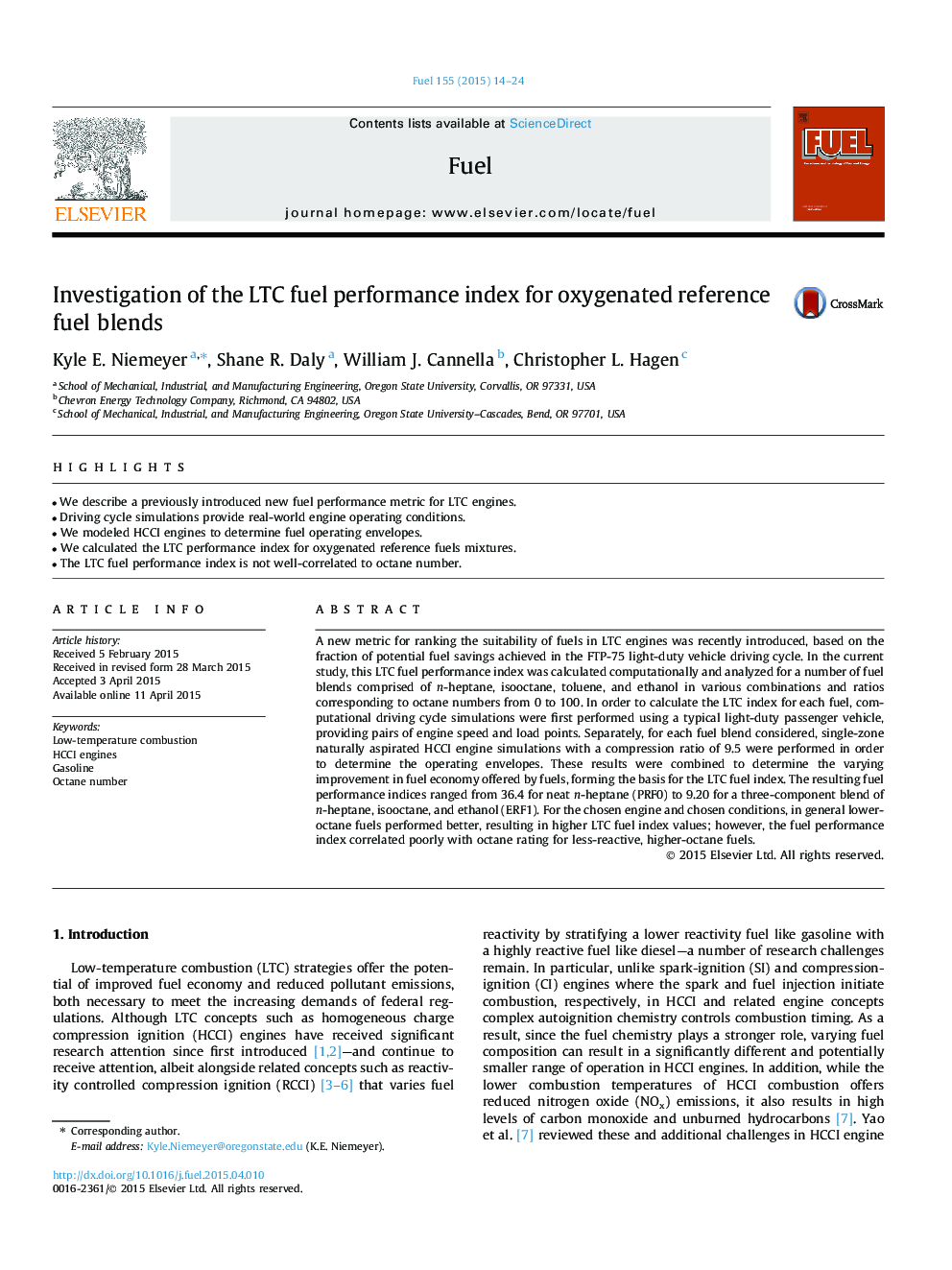| Article ID | Journal | Published Year | Pages | File Type |
|---|---|---|---|---|
| 205594 | Fuel | 2015 | 11 Pages |
•We describe a previously introduced new fuel performance metric for LTC engines.•Driving cycle simulations provide real-world engine operating conditions.•We modeled HCCI engines to determine fuel operating envelopes.•We calculated the LTC performance index for oxygenated reference fuels mixtures.•The LTC fuel performance index is not well-correlated to octane number.
A new metric for ranking the suitability of fuels in LTC engines was recently introduced, based on the fraction of potential fuel savings achieved in the FTP-75 light-duty vehicle driving cycle. In the current study, this LTC fuel performance index was calculated computationally and analyzed for a number of fuel blends comprised of n-heptane, isooctane, toluene, and ethanol in various combinations and ratios corresponding to octane numbers from 0 to 100. In order to calculate the LTC index for each fuel, computational driving cycle simulations were first performed using a typical light-duty passenger vehicle, providing pairs of engine speed and load points. Separately, for each fuel blend considered, single-zone naturally aspirated HCCI engine simulations with a compression ratio of 9.5 were performed in order to determine the operating envelopes. These results were combined to determine the varying improvement in fuel economy offered by fuels, forming the basis for the LTC fuel index. The resulting fuel performance indices ranged from 36.4 for neat n-heptane (PRF0) to 9.20 for a three-component blend of n-heptane, isooctane, and ethanol (ERF1). For the chosen engine and chosen conditions, in general lower-octane fuels performed better, resulting in higher LTC fuel index values; however, the fuel performance index correlated poorly with octane rating for less-reactive, higher-octane fuels.
